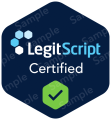Understanding Drug Rehab in New York: Your Path to Recovery - Guide to Treatment
Call us today!
Drug rehab in New York offers hope for those struggling with addiction. Many people face challenges on their path to recovery, but treatment can help. Professional rehab programs provide tools and support to overcome substance use disorders and build healthier lives.
New York has many options for addiction treatment—these range from inpatient facilities to outpatient programs. Each person’s needs are different, so finding the right fit is important. Rehab often starts with detox and then moves to therapy and skills training. Getting help for addiction takes courage. But with the right treatment, people can and do recover.
New York rehab centers aim to guide patients through the process step-by-step. They teach ways to manage cravings and avoid relapse. The goal is long-term healing and a fresh start.
Key Takeaways
- New York offers many types of drug rehab programs to fit different needs.
- Treatment often includes detox, therapy, and learning new coping skills.
- Recovery is possible with the right support and commitment to change.
Assessing Treatment Needs and Options in New York
New York offers many ways to get help for drug and alcohol problems. The right treatment depends on each person’s situation and needs.
Navigating the Healthcare System for Addiction Treatment
Getting treatment starts with talking to a doctor. They can check for health issues and suggest next steps.
Some people may need to detox first to safely stop using drugs or alcohol.
Insurance often covers addiction treatment. Medicaid and Medicare can also help pay for care. Free and low-cost options exist for those without insurance.
There are many places to get help in New York. These include hospitals, clinics, and rehab centers. Some focus on specific drugs like opioids or alcohol.
Understanding Inpatient versus Outpatient Services
Inpatient rehab means living at a treatment center for weeks or months. It offers round-the-clock care and support.
Outpatient programs let people live at home. They go to treatment during the day or evening. This works well for those with jobs or family duties.
Both types use therapy and other treatments. The choice depends on how severe the addiction is. It also depends on what kind of support the person has at home.
Specialized Programs for Diverse Populations
New York has programs for different groups. Some focus on teens or older adults, while others help pregnant women or LGBTQ+ people.
There are programs in many languages. Some use cultural practices in treatment. This can make people feel more at ease.
Some rehabs help with both addiction and mental health. This is good for people dealing with both issues. Other programs focus on certain drugs like opioids or alcohol.
New York also has support groups, including AA, NA, and SMART Recovery. These groups can help during and after formal treatment.
The Treatment Process: From Detox to Long-Term Recovery
Drug rehab involves several key steps to help people overcome addiction. The process starts with detox and moves through therapy, recovery planning, and ongoing support.
Detox: The First Step Towards Recovery
Detox is often the first stage of addiction treatment. It allows drugs to leave the body safely.
Medical staff watch patients closely during this time. They may give medicine to ease withdrawal symptoms.
Detox can last a few days to a few weeks. The length depends on the drug used and how long someone has been addicted.
After detox, the body is free of substances. This makes it easier to focus on getting better.
Therapeutic Approaches to Substance Use Disorders
After detox, patients start therapy. This helps them learn why they became addicted. It also teaches ways to stay drug-free.
Common types of therapy include:
- One-on-one counseling
- Group therapy sessions
- Family therapy
- Cognitive-behavioral therapy
Some rehabs use medication along with therapy. This is called medication-assisted treatment. It can help reduce cravings and prevent relapse.
Developing a Sustainable Recovery Plan
A good recovery plan is key to staying drug-free. It outlines steps to take after leaving rehab.
This plan often includes:
- Regular check-ins with a counselor
- Joining support groups
- Learning new hobbies
- Building a sober social network
- Strategies for handling triggers
The plan also covers what to do if a relapse occurs. This roadmap increases the chances of long-term success and helps people stay on track with their recovery goals.
Insurance and Financing for Addiction Treatment
Getting addiction treatment can be costly. Many options exist to help pay for rehab.
Insurance often covers some or all of the costs. Other financing choices are also available for those without insurance.
Understanding Insurance Coverage for Treatment
Most health insurance plans cover addiction treatment. This includes Anthem, Blue Cross Blue Shield, Cigna, Aetna, Health Net, Humana, and UnitedHealthcare plans.
Coverage levels vary by plan. Some may cover all costs, while others only pay for part of the treatment.
It’s important to check your specific policy.
Call your insurance company to ask about the following:
- Types of treatment covered
- In-network vs. out-of-network providers
- Copays and deductibles
- Limits on treatment length
OASAS-certified facilities in New York often accept insurance. They can help check your coverage and explain costs.
Exploring Other Financing Options
For those without insurance or needing extra help, other options exist:
- Payment plans: Many rehabs offer monthly payments.
- Sliding scale fees: Some centers adjust costs based on income.
- Grants and scholarships: State and private groups may offer funds.
- Personal loans: Banks or online lenders can provide financing.
- Credit cards: Some people use cards for treatment costs.
- Crowdfunding: Online platforms let friends and family help.
Some employers offer help through Employee Assistance Programs. Local health departments may also have resources.
It’s worth exploring all options to get the care you need.

 / © 2025
/ © 2025
